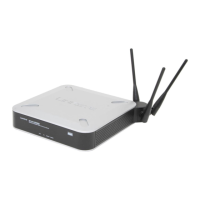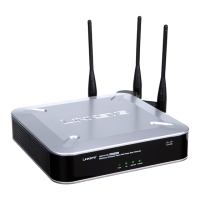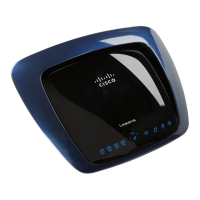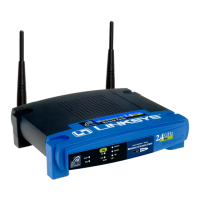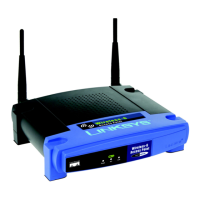47
Band Steering
Band Steering
Enable or disable Band Steering function.
Band Steering is a technology that detects whether the wireless
client is dual-band capable. If it is, band steering pushes the
client to connect to the less-congested 5 GHz network. It does
this by actively blocking the client’s attempts to connect with
the 2.4GHz network.
Isolation
Isolation between
SSIDs
Define whether to isolate traffic between SSIDs. If enabled,
wireless clients in different SSIDs cannot communicate with
each other. Enabled by default.
Advanced Parameters
Wireless Radio
Select the desired radio from the list.
Radio 1 is for 2.4 GHz, and Radio 2 is for 5 GHz.
Worldwide Mode
(802.11d)
Worldwide Mode (802.11d) enables the access point to direct
connected wireless devices to radio settings specific to where in
the world the devices are in use.
Channel Bandwidth
You can select the channel bandwidth manually for Wireless-N
connections. When it is set to 20MHz, only 20MHz channel is
being used. When it is set to 40MHz, Wireless-N connections
will use 40MHz channel, but Wireless-B connections and
Wireless-G connections will still use 20MHz channel.
Guard Interval
Select the guard interval manually for Wireless-N connections.
The two options are Short (400 nanoseconds) and Long (800
nanoseconds). The default is Auto.
CTS Protection Mode
CTS (Clear-To-Send) Protection Mode boosts the access point's
ability to catch all Wireless-G transmissions, but it severely
decreases performance. By default, CTS Protection Mode is
disabled, but the access point will automatically enable this
feature when Wireless-G devices are not able to transmit to the
access point in an environment with heavy 802.11b traffic.
Beacon Interval
The access point transmits beacon frames at regular intervals to
announce the existence of the wireless network. Enter the
interval between the transmissions of beacon frames. The value
range is between 40 and 1000 milliseconds and default is 100
milliseconds.

